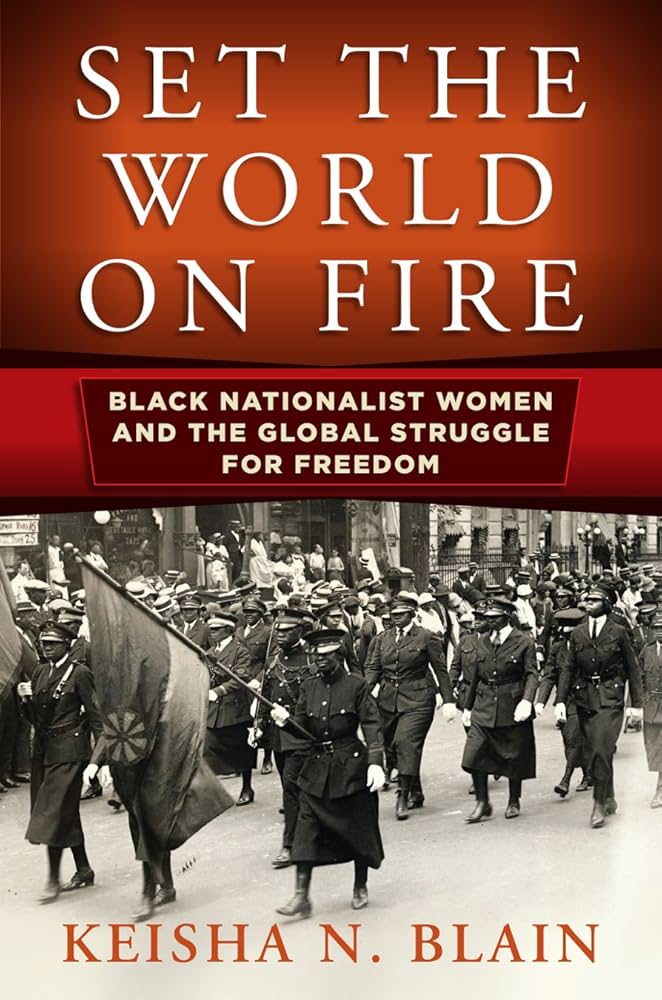Our historical and contemporary images of black nationalism privilege the masculine. This is true whether in distant or recent memory. Images of black men dressed in crisp black uniforms marching in unison to military dirges as part of the Black Legion of Marcus Garvey’s Universal Negro Improvement (UNIA) dominate our historical memory. Our contemporary understandings routinely feature members of the Black Panthers, primarily the male members, marching in formation with guns in the 1960s and 1970s.
These pervasive images accentuate as much as they mask. Women played central, if not pivotal roles in these organizations. They were founders, organizers, theoreticians, foot soldiers, and sustainers. Keisha N. Blain’s Set the World on Fire shows us what is hidden in plain sight. More importantly, she lays bare the foundational elements of black nationalist thought and practice. In short, women were not simply helpmates to men, but the creators and constructors of the intellectual, ideological, and organizational underpinnings of the black nationalist project in the 20th century.
Casting her intellectual net long and wide, Blain begins with the Garvey movement. Amy Ashwood Garvey and Amy Jacques Garvey figure prominently in this analysis. Blain underscores their central role in the everyday organizational work of the UNIA and their contributions to the woman’s pages of UNIA’s publications. Challenging the masculinist presentation of the organization, women faced challenges to their desire to lead and were often relegated to secondary roles in the organization. Nonetheless, they carved out independent paths by articulating a maternalist discourse that situated women as important factors in nation building and maintenance.
Garvey’s deportation in 1927 did not signal the demise of nationalist agitation. Nor did it mean the exclusive turn to the Old Left, given that he was the insurgent leader in racial activism. Rather, as Blain reveals, the interwar period witnessed vibrant working-class activism led by black women that laid the groundwork for subsequent activity in the 1960s. Here Blain’s work compliments and extends existing dynamic scholarship on black women, activism, and working-class culture. Her exploration of the Peace Movement of Ethiopia (PME) crystallizes this point.
The PME was founded by Mittie Maude Lena Gordon, a Garveyite woman, in 1932. Gordon’s movement drew on several strains of African American organizational and religious thought. She drew liberally from Garveyite structures, including a strict protocol at meetings, the active solicitation of donations known as “street strolling,” the establishment of branches in cities throughout the Midwest, and the formation of the Protective Corps, which was an all-male unit based on the African Legion. Gordon also utilized the religious ideas of Noble Drew Ali’s Moorish Science Temple of America, whose members referred to themselves as “Moors” and added the surname Bey or El to their names. Although she derived inspiration from this group, the core beliefs of the organization remained Christian.

